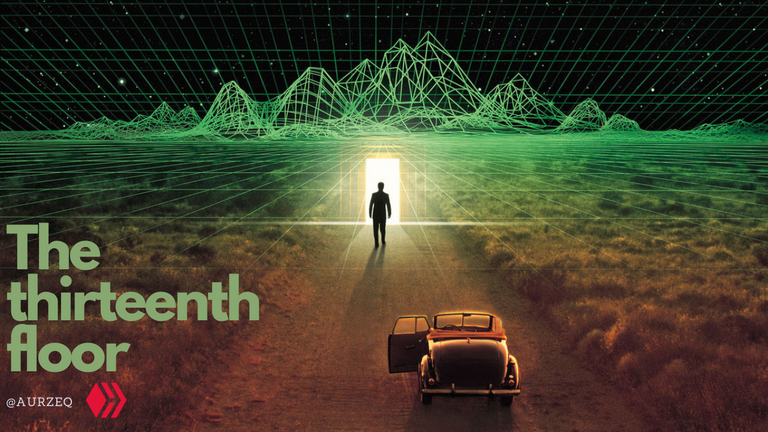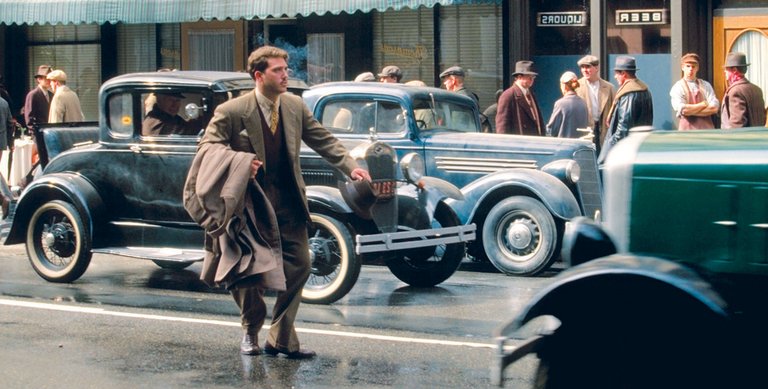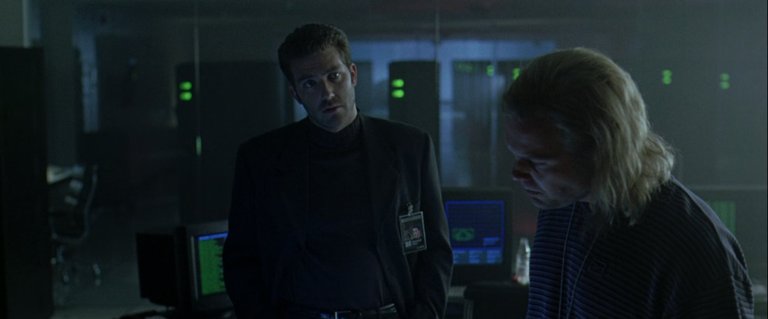
Source

Index
click on the desired section to move there directly

Introduction
Descartes stated, "I think therefore I am". But is this really true? Science fiction movies are challenging what reality means. The expansion of technology, the progress of knowledge, and the domination of information technology require new perspectives and experiences. With the help of literary elements from the past (such as the double or the travel through time that serves as a journey of self-discovery), science fiction continues its debate on man in a fresh and insightful way (the relationship between existence and the universal, the world as appearance). Beyond the visual finesse or the various levels of spectacularity, movies like The Cube, The Matrix, and this one all raise an uncomfortable doubt: being, thinking, imagining ... which category belongs to the dimension of reality?
press here to scroll back to the index

Reality and imagination
There is always a zone in between dream and reality where everything we imagine has such distinct contours that we can see, hear, and feel it. This frequently takes the form of a hastily constructed universe in which all of its inhabitants—which could count as few as two—move in accordance with our goals and ideals and in which we remove all filters by exposing our faces as they really are. Undoubtedly, "The thirteenth floor" begins on this level before moving on to something more intimate that successfully combines man's most basic emotions with his greatest fear: the depersonalization of himself.To doubt, or rather to know, that one is nothing, that one is controlled and that one doesn't have or has only very few choices to make, kills by definition the human being as such, relegating him to a video-game specimen.
"The Thirteenth Floor" combines this deconstruction of reality with elements from The Matrix to portray a world—or rather, a series of worlds—that are observed and controlled by others and are solely used for entertainment and leisure (like in The Truman Show). By repeatedly fusing the created and the creator, as if emotions are something that transcends their own birth and serves as the link between imagined and experienced, the film's accumulation of events has the effect of flattening time and space. Points a and b become two equal and distinct spots where life flows continuously and with the same intensity both horizontally and vertically, losing their identity at one point after another. Man's intellect clashes with his violence and his arrogance toward others and neglects the power and purity of feelings. In this particular instance, the improbable love between Douglas and Jane (Gretchen Mol) becomes a symbol of optimism, demonstrating how nothing is impossible and that, despite all of the technology in the world, there will always be the magic of feelings and the undeniable purity of the "real" physical contact.

Source
press here to scroll back to the index

The movie
I found the movie very interesting, however, it's sad that the box office did not recognize it. "The thirteen floor" is a movie that deserves consideration, especially in light of its narrative, which manages to be both well-calibrated and far from boring. Although it talks about other universes, there are no temporal paradoxes to solve or extremely intricate dimensional plots, so the script is just difficult on the surface. Yet, in this case, the main idea is what matters most.
Excellent pacing, intriguing characters, and most importantly, no cheating on the audience. Apart from the ending, that leaves some room for confusion because the artificial mind is considered too lightly like interchangeable with the human mind, everything is made abundantly obvious, so it really isn't a major concern.
The usage of computer graphics for the special effects is effective and (strangely) neither intrusive nor tacky. It paid the price for an ineffective marketing strategy when it was almost simultaneously released with The Matrix.

Source
press here to scroll back to the index

Plot
The elderly Hannon Fuller and his assistant Douglas have created a new frontier of virtual reality in contemporary Los Angeles, on the thirteenth floor of a skyscraper where their company is headquartered. Using computer microchips, they recreated a door through which they can enter the Los Angeles in 1937. So, the two start living a life split between the past and the present. When Fuller is suddenly discovered dead, all the evidence seems to point to Douglas. Yet, the fact that it is unclear which of the two "realities" the murder took place in makes things more difficult. Then the virtual system starts to fall apart. Jane Fuller, the daughter of Fuller, gets curious and learns that Douglas, the "non-real" Douglas one, killed her father. Nevertheless, Jane also has a double personality. Her "other" name is Natascha Molinaro, and the man who is married to her is the person who used the computer to give Douglas the idea to murder Fuller.

Source
press here to scroll back to the index

Conclusion
A movie like The Thirteenth Floor is meant to open the viewer's eyes and help them realize their own individuality in a world of simulations, relationships that are becoming more and more fake, and fictions of every type that are communicated by computers and the internet. There are and could be countless versions of ourselves, we can create countless characters to play, and we can create worlds that support other worlds, but everything has an effect. Sometimes it seems as though one's convictions are purely the product of illusions and dreams, but a dream or an idea might also be true. Douglas would say, "I am not real and you cannot fall in love with a dream!" yet increasingly, crazily enough, dreams are the greatest and most genuine parts of us, the parts we ultimately choose to live with. How could we not fall madly in love with them?
press here to scroll back to the index

Rating
My personal vote is:
8.0/10
press here to scroll back to the index

Farewell image and text separators, created by me with Canva